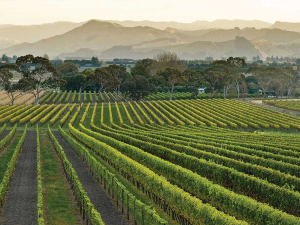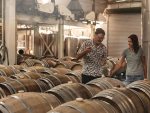“I still don’t know how we achieved it to be honest,” says Mark Thompson, Chief Winemaker at GisVin and Chair of the Gisborne Winegrowers Association.
So while the region has been inundated with rainfall this season, with 219.3mm recorded in the first 15 days of January, he’s counting himself lucky that it has fallen pre-veraison. “The best-case scenario is that we’re prepared for the worst and hopefully what we get is better than that,” Mark says on 18 January, in the midst of “a substantially amazing two days where the sun has shone, intermittently".
He’s been visiting vineyards every one or two days and says despite the high incidence of botrytis infection periods, vineyards are looking relatively healthy, “apart from the fact that there’s a fair amount of water out there”. Growers have done a really good job of minimising issues, he says, applauding their vigilance in spray schedules and canopy maintenance.
Kirsten Searle, from Matawhero Wines, says the season has been challenging, but agrees that fruit is looking unscathed, thanks to the timing of the rain. “There are some pressures definitely, but we have done everything we can to combat that disease pressure and if the weather changes the fruit will come through fine.” And she says for all the headaches of the last vintage and this season, Gisborne had blessed vintages between 2012 and 2022, “so we’ve had a really good run as a region”. Nature often serves up lighter crop loads at the right time, and the lower Chardonnay yields are welcome given the season, Kirsten adds. “The less fruit you have to ripen, the easier it gets.” And as long as the rain stops and sun comes out, “it could be a good vintage at the end of the day”.
Labour has been a challenge in the region, but the return of some backpackers is providing workers for the vineyard and winery. However, there’ll be pressure to get canopy management completed before nets go on “to keep the birds off our beautiful fruit”, says Kirsten, who’s also trialling laser technology as a bird deterrent this year.
The rich fertile soils of Gisborne mean grape growing competes for space with other crops in the region, such as lettuce, tomatoes, sweet corn and squash, alongside apple and kiwifruit orchards. But vineyards are nonetheless going in, including Pinot Gris and Sauvignon Blanc blocks that are proving a successful option for growers. Meanwhile Gisborne’s dry farmed Chardonnay remains its calling card, “with a ripe, fruit driven style,” Mark says. “It’s a region that has produced some incredible wine over the years and will continue to do so.”














